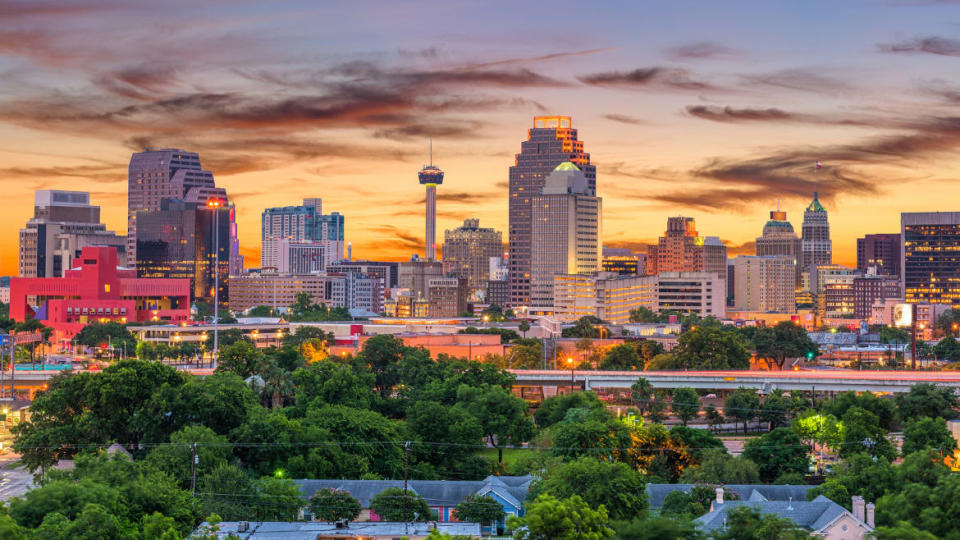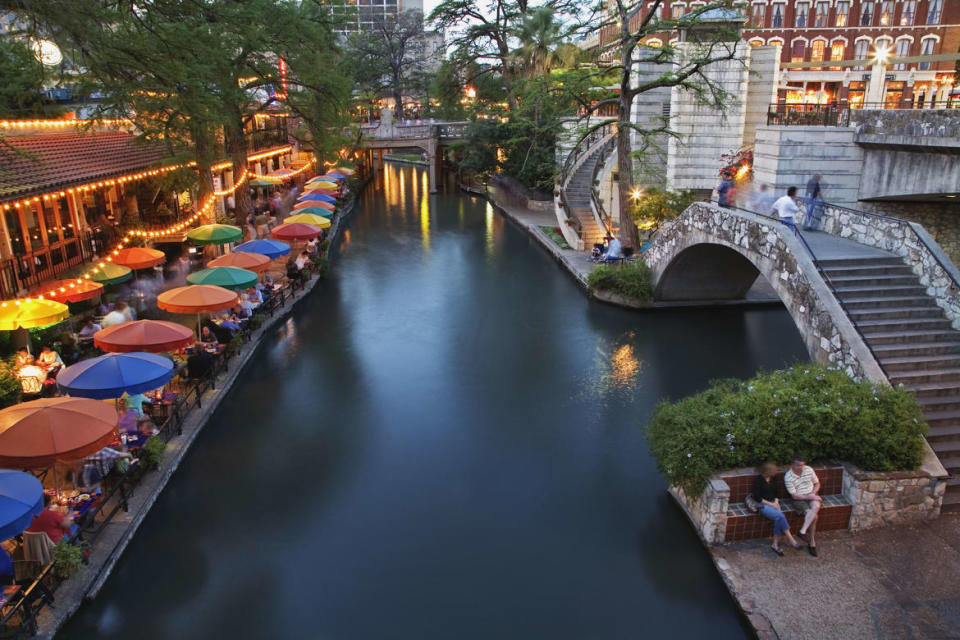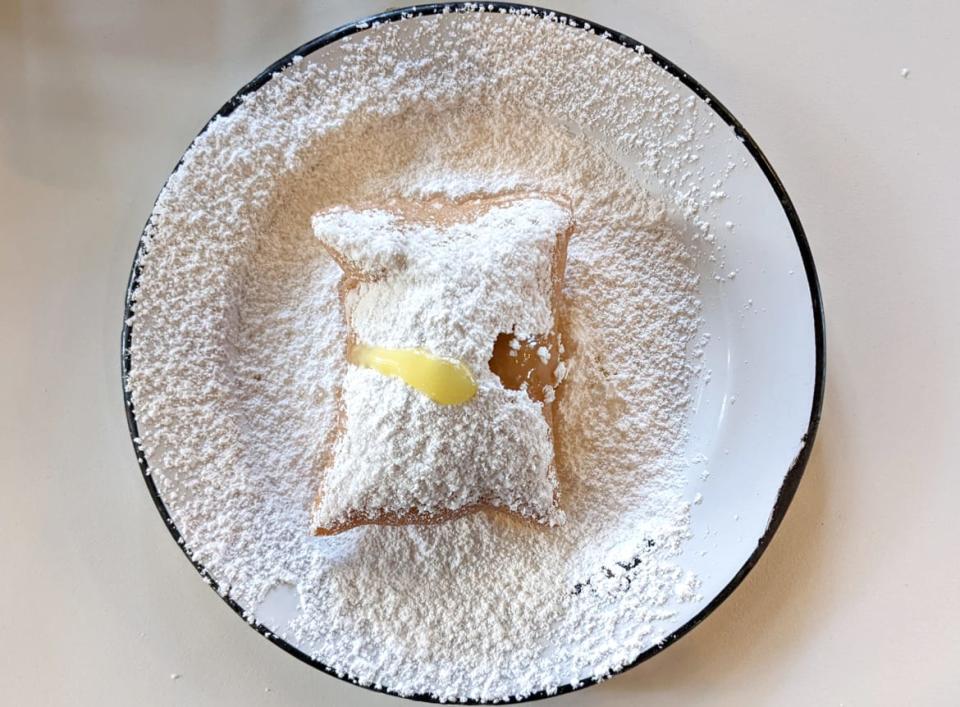This ‘Lame’ American City Is a Bona Fide Feast

This is the latest in our twice-a-month series on underrated destinations, It’s Still a Big World.
Every city is known for something. When you think of Chicago, you might imagine Chicago-style pizza or The Bean. If you think of New York, Broadway might come to mind. And D.C.? I’m going to say, gridlock.
But which city is both a UNESCO World Heritage site and UNESCO creative city of gastronomy? Which city has its own Mardi Gras-esque two week party? Which city also has a massive cave system? Which city might not be on your vacation list, but should be?
San Antonio, Texas. That city.
While spending a few days in San Antonio at the invitation of their tourism offices, I found a place that surprises and delights—and I’m not just saying that because I consumed my weight in food and drink while crossing its cityscape.
While there, I’ve learned that while Austin’s slogan is “Keep Austin Weird,” many San Antonions prefer the unofficial, and less on-the-nose, motto for their city: “Keep San Antonio Lame.”
It isn’t that San Antonio is actually lame—at least not as I experienced it. It just knows what kind of city it is, scattered and spread out, laid-back, and not identified as a single thing like “Live Music Capital of the World.”
That is not to say that San Antonio isn’t known for certain things.
Say the name San Antonio, for example, and the first thing that comes to mind might be the Spurs. At least, that’s what I’ve heard. I don’t follow (…looks up the Spurs on Google…) basketball. You also think of the River Walk—and for good reason. Like any large city, San Antonio’s streets come with its requisite sounds and scents, but when you slip down those steps off of street level, you find yourself in a different world entirely. It’s riverside dining. It’s shopping. It’s romantic. It’s a party. And there is a charming river and greenery running through it all.

The San Antonio River Walk.
But for the city-curious, San Antonio is much more than a River Walk. If you don’t go exploring, then you’ll miss a lot. By not being one thing, San Antonio has a lot for everyone.
First, San Antonio is history—a history that becomes a massive party.
I arrived at the beginning of Fiesta, a colorful, nearly two-week, event-packed celebration of San Antonio’s heritage and culture that began in 1891. Often compared to Mardi Gras, Fiesta remembers the Battle of the Alamo and the Battle of San Jacinto, the latter which brought Texas independence from Mexico in 1836.
Everywhere I went, baristas, hotel staff, chefs, and Uber drivers all asked, “Are you here for Fiesta?” That was usually followed with, “there’s no party like it.”
But going beyond this party, San Antonio is home to another side of historic Texas: five missions roughly 2.5 miles apart that encapsulate its strong historical roots in the Catholic missions of the Spanish frontier. All five San Antonio missions, The Alamo (the best known), Mission Concepcion, Mission San Jose, Mission San Juan, and Mission Espada are connected by the Hike & Bike Trail that follows the river. Only four—not including The Alamo— are part of the San Antonio Missions National Historic Park, and are the only UNESCO World Heritage Site in Texas.
The missions, which served as communities—even having defensive walls—reflect Spanish colonial architecture with a blend of other European and local influences. That architecture is a defining image of San Antonio’s history. Even my home away from home while visiting, Omni La Mansión del Rio, borrows that architecture and history in its facade and with its walled garden space.

The Alamo in San Antonio.
And this leads to another side of San Antonio: it is the outdoors.
The Hike & Bike Trail provides a beautiful ride or walk to each of the missions. I picked up a bike rental from the Blue Star Bike Shop in Southtown and was fortunate to have a sunny day. The trail is lush and wildlife friendly, and its soundtrack is the river. It is also just as easy to walk, though it will take much longer if you’re touring the missions.
While you’re on the Hike & Bike Trail, also consider stopping at Confluence Park. The park is a unique space for educating students in the community on rain water, the river, and plant life. The park architecture is an active example of rainwater collection built into not only its porous parking, but also the design of its structures.
This was not my only cycling trip while in San Antonio—which has plenty of bike trails to choose from. I also joined Mural Ride for a colorful tour of San Antonio's Street Art. A comfortable, guided ride through San Antonio’s streets and alleys, their guides know each piece of street art, their details, and sometimes the artists themselves. It’s a fantastic ride that gave me an appreciation for the hidden gems found around every San Antonio corner.

San Antonio city mural.
But if a nature walk is more your speed, a must see is Phil Hardberger Park Conservancy. The park has several trails that are great for birding, but also it is home to the Land Bridge, a bridge that crosses over the expressway and is designed to look natural, allowing for wildlife to cross over to both sides of the park without having to cross through busy traffic.
And while you’re out walking nature, check out the sustainably built San Antonio Botanical Garden. The architecture of the garden is designed to conserve resources, especially water. There is also a birding trail for those birders who want to add new bird species to their list on the app eBird. Keep an eye out for the stark, pale orange eyes and pink legs of Egyptian geese, an invasive species in the area first established by wealthy people last century to decorate their ponds. They were once considered sacred in Ancient Egypt.
If time allows, visit the peaceful Japanese Tea Garden, also known as the Sunken Gardens, in Brackenridge Park. The large open space has walking trails that allow visitors to see it from any angle. When you arrive, you may notice that it says, “Chinese Tea Garden” at the entrance. During World War II, there were fears that something labeled “Japanese Tea Garden” would get vandalized, so the name was temporarily changed. (And that somehow worked?)

Natural Bridge Cavern.
But if you're looking for an adventure in the underworld, then I’d highly recommend checking out the Natural Bridge Cavern. Discovered by four college students in 1960, the cavern has turned out to be the most-extensive cave system in Texas. Tours are available. There is also a 60-foot aerial adventure that consists of ropes and ziplines.
So yeah, San Antonio has an outdoor life for just about anyone.
But lastly, and this can’t be expressed enough, San Antonio is food—a diverse, tasty culinary scene. With a Culinary Institute of America campus in the Pearl district along the River Walk, that UNESCO creative city of gastronomy is no joke. It is the second city to get that designation in the United States. Every chef I met praised the city’s food community and diversity and the collegiality of chefs in promoting that food culture.

The lemon curd stuffed beignets at Nola Brunch & Beignets.
My week was bookended by food, starting with Nola Brunch & Beignets. Co-owner and chef, Pieter Sypesteyn was born and raised in New Orleans. His mother was from Texas and he spent his childhood hanging out in his parents’ restaurants.
The menu at Nola embodies that New Orleans background and captures the color and life of the Bywater—my brunch was the cajun boudin chilaquiles, which has a chipotle gravy, lemon crema, sunny side up egg with arugula and queso fresco. The lemon curd stuffed beignets, which I now dream about nightly, are a wonderfully bright way to start the day.
Nola is part of “A Taste of New Orleans,” which celebrates the music and food—gumbos, red beans and rice, shrimp creole, etouffee, shrimp kabob, jambalaya, cajun catfish—of New Orleans in San Antonio.
From that moment on, my week in the city was a series of table-hopping some of the city’s best restaurants.
If you’re staying downtown and want breakfast, the El Buenos Dias (egg whites, avocado, bacon, turkey, tomato lettuce and cilantro mayo) at La Panaderia is good for fueling your day. They also have a wide-selection of breads, sandwiches, and pastries. Just give yourself extra time because there is often a line.

El Buenos Dias at La Panaderia.
For lunch, Botika, at the historic Pearl, the work of Venezuelan Chef-Owner, Geronimo Lopez, provides a window into the intersectionality of Chinese-Peruvian food (Chifa) and Japanese-Peruvian food (Nikkei) and Chef Johnny Hernandez’s Burgerteca in Southtown, takes the American burger to new levels by bringing in the flavors of Mexico, like the Oaxaca’s beef patty, mole negro, black beans, picked red onions, avocado, and queso fresco. After a bike ride on the Hike & Bike Trail, stop in before dropping off your bike and get their unforgettable cucumber margarita, which is perfect for hot days.
If you’re looking for a happy hour break, be sure to stop by the lounge at Hopscotch, where you can pick up a cocktail at the bar and venture into their quirky, immersive, experiential art gallery. It’s mesmerizing even when you’re not drinking.
For dinner, DASHI Sichuan Kitchen + Bar, the child of owners Kristina Zhao and Executive Chef Jian Li, brings new, delicious takes on classic Sichuan dishes and Boudro’s Texas Bistro combines the Riverwalk ambience with a menu of elevated cuisine—anchored in fresh fish of the Gulf Coast and firmly planted in the tradition of Texan steaks.
All of my gluttonous feasting led to the start of Fiesta with Taste of the Republic, hosted at The Good Kind in Southtown by owner, Tim McDiarmid, also known as Tim the Girl, a James Beard Fellow & Food Network Chopped Competitor. The Good Kind is a hidden gem whose small building belies its quiet, green garden space where you can enjoy healthy, responsibly sourced food and cocktails. It was the perfect place for The Taste of the Republic.
A VIP event, chefs that participated in Taste of the Republic take on a menu that honors the six culinary regions of Texas identified by Chef Brian West.
West divides up Texas cuisine into regions: south Texas is vintage Tex-Mex, central Texas is Texas style barbecue, the north is Texas steaks, the gulf is a simplified seafood, west Texas is red chilis, and east Texas is where the muscadine grape is native and you’ll find wild grape jellies.
So yes, San Antonio is more than it appears at first glance, but if a wild, city-wide party, world recognized historic sites, and a lively food scene is what makes San Antonio lame, then I really don’t want it to be cool.
Get the Daily Beast's biggest scoops and scandals delivered right to your inbox. Sign up now.
Stay informed and gain unlimited access to the Daily Beast's unmatched reporting. Subscribe now.
